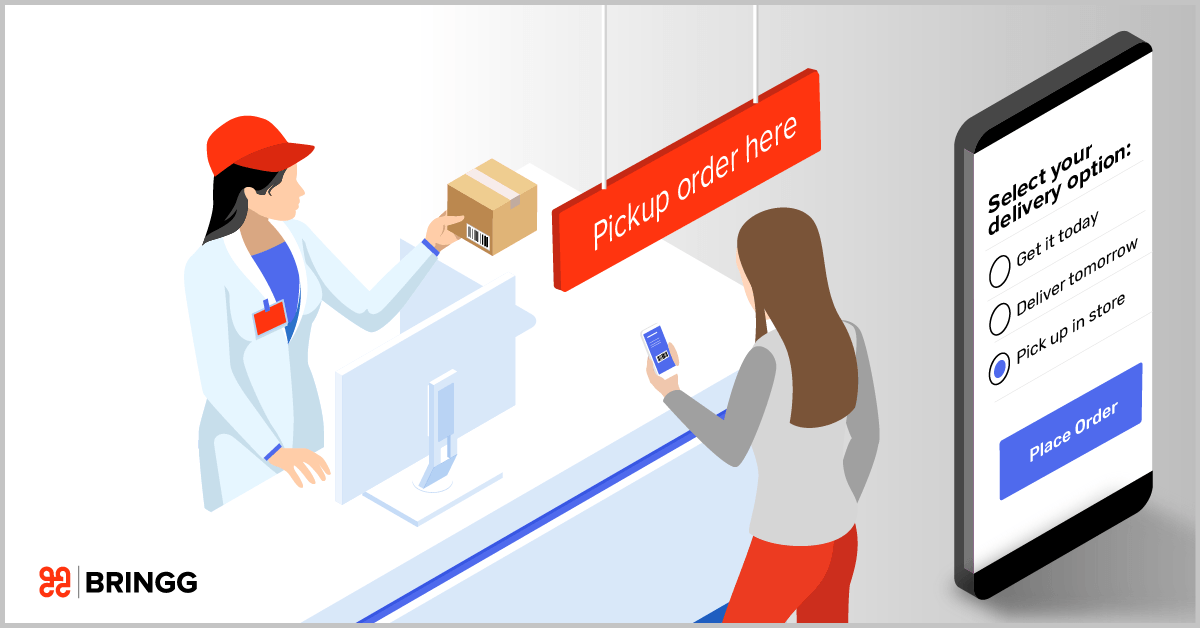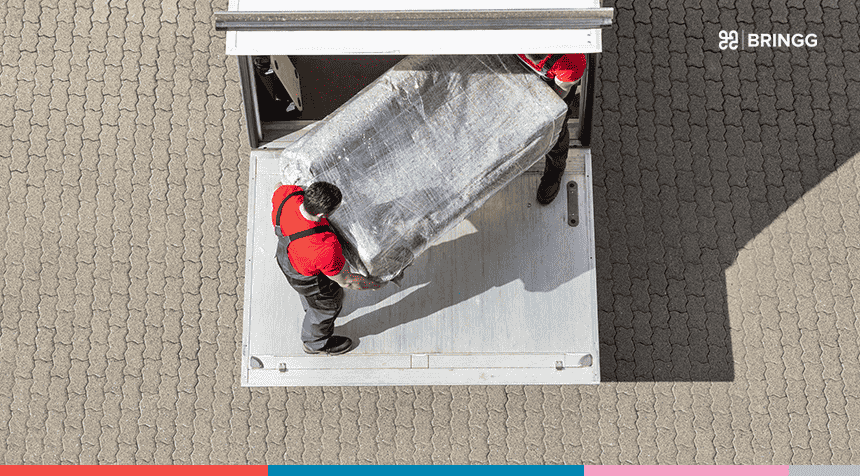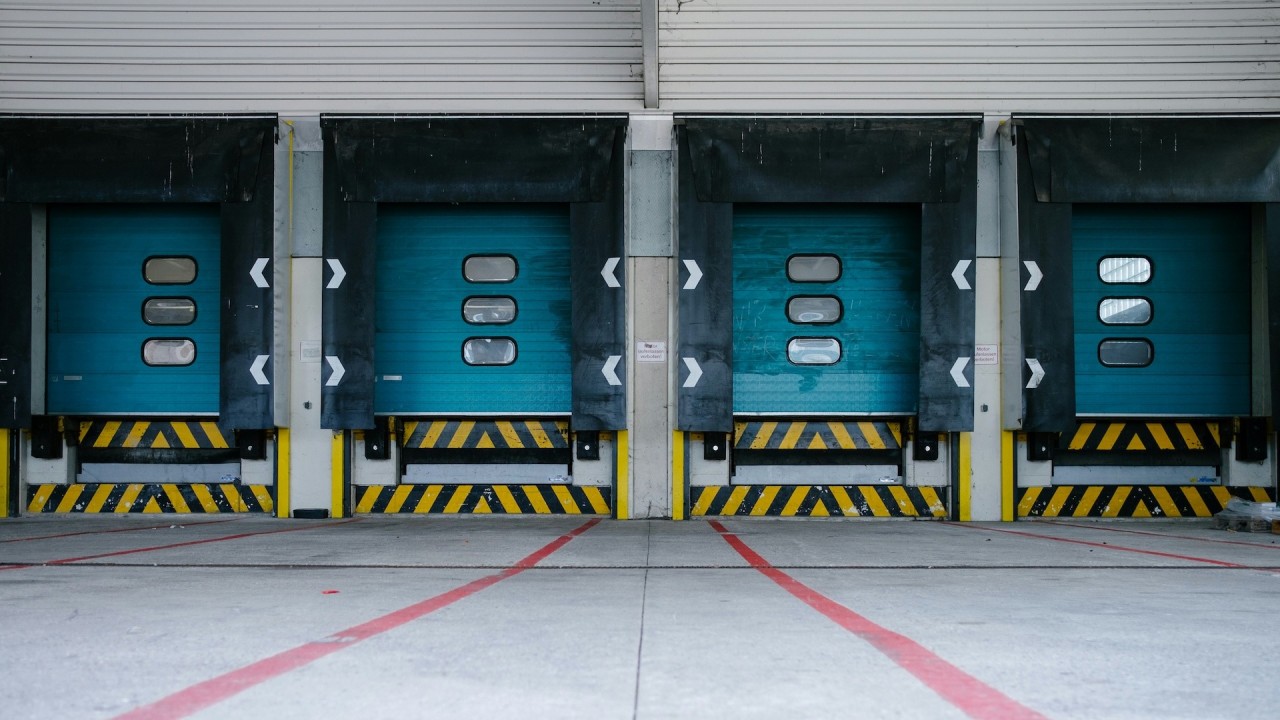This is going to be a seminal year for retail. Last year, we saw eCommerce continue to broaden its reach. Now, businesses are scrambling to stand out in a suddenly saturated field where respected brands are closing shop, and flexible ecommerce fulfillment has become the prime differentiator between breakout success and bankruptcy. While it may seem enough to survive the current market upheaval, retailers need to set a game plan. The trick to doing both is to offer omnichannel fulfillment models like buy online, pickup in store (BOPIS) that serve your business needs as well as the customers’.
To get there, you’ll need to catch up on two things: How to take advantage of your retail locations to operate BOPIS, BORIS and other in-store fulfillment models, and how to develop the operational efficiency to cover the cost to your business.
Read on to learn what it takes to power seamless, efficient in-store pickup flows that are part of a successful omnichannel fulfillment strategy.
The Gap: customer expectations vs retail offerings
It’s the missing speed and convenience that’s driving 66% of online shoppers to Amazon first, before even consulting your site.
Right now there’s still a huge gap between customers’ delivery expectations and retail offerings. This discrepancy is what’s driving a majority of online shoppers to Amazon first, before even consulting your site.
You can reach the same conclusion by looking at the prestigious retail brands that filed for bankruptcy in the first half of 2020, including Neiman Marcus, Brooks Brothers, Pier 1. While other factors may have been involved in why these brands closed shop, they were all unprepared for the speed of ecommerce adoption and how swiftly they’d be called on to offer alternative fulfillment solutions.
The data is clear: your delivery and fulfillment offerings decide where your customers do their online shopping. Retailers who want to remain competitive can’t ignore the need to optimize and expand their retail fulfillment options.
It’s clear that retailers are aware of this, with 90% of retailers expected to offer BOPIS by 2021. Given this, retailers need to place huge emphasis on building up cost-effective in-store fulfillment with unified experiences across all online and offline locations – and they need to do it right now. They’ll also need to go the extra mile to ensure customers get unified last-mile experiences regardless of whether it’s a delivery or in-store fulfillment of an order.
BOPIS: Using retail locations to your advantage
Running buy online, pickup in store (BOPIS), also known as click and collect, is a strategy that can garner your brand a reputation for flexible, convenient fulfillment options, and through it, a good fulfillment experience. Adding your retail locations to your ecommerce supply chain and fulfillment flow gives your customers additional options with the optimal efficiency from the business point of view – you’re using existing staff and resources to fulfill the order. It also lets stores benefit from foot-traffic when people come to pick up (BOPIS) or return (BORIS) their orders.
Besides satisfying customers, BOPIS is also one of the most cost-effective fulfillment models. Retailers who leverage their brick-and-mortar locations for pickup fulfillment can offer faster fulfillment at better rates, thanks to no (or low) shipping costs to customers. BOPIS and curbside pickup allow retailers to take a costly pain – excess inventory – and use it to provide faster fulfillment (e.g. free same-day in-store pickups).
Given this, it’s not surprising that 55% of retailers are offering BOPIS services, and fully 67% are operating department or mall stores turned into ‘dark’ stores and fulfillment centers.
But why not everyone?
It’s clear that retailers who are able to take advantage of their physical footprint with BOPIS and similar models stand to gain substantially. So why isn’t every retailer providing BOPIS? And why hasn’t it happened already?
The struggles of launching and managing BOPIS
BOPIS is a relatively straightforward fulfillment model. But what many retailers forget is that ‘simple and straightforward’ is not the same as ‘easy to operate’.
Lack of planning – Imagine you are an in-store shopper. You’ve chosen an item or two, and make your way towards the register. After a minute or two in line, the person in front of you approaches the register and hands the store employee their phone, with a long item number on it. The employee disappears for a few minutes, looking for the order, but can’t find it. After a few minutes, they come back outside, apologizing to the infuriated customer.
In this scenario, the BOPIS customer waited in line, only to find out their order was misplaced. They’ll have to come back another time. The in-store shopper behind them also wasted time in line. This happened because store operations – from store layout to customer service – were not set up for BOPIS.
Without the proper planning, coordination, and visibility into resources, BOPIS can result in a bad customer experience for more than just the BOPIS customer.
Inventory needs to be synced across multiple systems. Many retailers do not have a real-time view of in-store inventory levels and cannot properly manage those levels for walk-in vs. online customers. This makes it difficult for them to provide a guaranteed pickup in-store or ship from store time to their online customers. This can lead to online customers coming to pick up their order in a brick-and-mortar retail store, only to find out that the item is not in stock because it was sold to a walk-in customer.
The other problem with this scenario is the lack of coordination between resources, including brick-and-mortar locations. Some stores will have more staff available to quickly manage BOPIS orders. Will you launch BOPIS evenly across locations? Some stores may have inventory available; for other locations, you may have to bring it in from an MFC first. How will this translate to pickup options during checkout? You need both visibility and full integration between your ecommerce site, POS, and other technologies
BOPIS takes more than just brick-and-mortar and online presence. It takes planning.
- Do you have staff available to manage BOPIS orders, or do you have to hire more?
- What will these people do when they are not fulfilling orders?
- Where will BOPIS customers pick up their orders in the store?
- Is there a dedicated BOPIS collection counter?
- How will in-store pickup affect the shopping experience of other customers in the store?
For retailers, solving these problems starts with planning, but it also takes the right resources – including the right tech.
Using BOPIS technology to deliver exceptional customer experiences
To realize your buy online pickup in store strategy, you will need to automate and optimize your fulfillment process, from providing accurate quotes during checkout, through all of your retail delivery operations, and down to the pickup in store.
With the right technology platform in place, you can offer exceptional BOPIS experiences that strengthen their brand and customer ‘stickiness’. These competitive experiences rely on your ability to do three things:
- Get connected — gather data from every node in your supply chain, from inventory location to retail store hours, to your customer’s pickup preferences. This will help you make informed decisions about which last mile fulfillment options are needed where, and ensure that they run smoothly.
- Connect your resources – the more in sync your purchasing, delivery and fulfillment channels are, the more successful you’ll be at providing great experiences for all, and keeping potential in-store friction to a minimum.
- Automate and Optimize – Automating the BOPIS flow through tools for retail and inventory teams will help them fulfill BOPIS orders accurately and efficiently. This will not only ensure the pick-up customer is happy, but that pickup operations do not disrupt service to in-store customers
- Create a unified delivery & fulfillment strategy
Make your BOPIS flow part of an omnichannel fulfillment strategy. Omnichannel shoppers spend more in-store and online than single-channel customers do. Furthermore, it has been demonstrated that spending increases with each additional channel that shoppers engage with. Shoppers who research their purchases online spend substantially more (13%) in-store. Omnichannel shoppers are also more loyal, with shoppers logging 23% more repeat shopping trips to brick-and-mortar stores within six months of an omnichannel shopping experience. Omnichannel shoppers are also more likely to recommend the retailer than single-channel shoppers.
Using fulfillment technology to sync your data, automate BOPIS operations, and coordinate between your different delivery and fulfillment channels helps ensure that your in-store pickup model results in cost-effective fulfillment and high customer satisfaction rates for every brick-and-mortar location.
See how these principles translate to a seamless BOPIS fulfillment flow:
How retailers can create seamless BOPIS operations: sample flow
Scheduling and Checkout
To make BOPIS as part of an omnichannel flow, the retailer’s ecommerce platform must be synced with the system that can identify the nearest retail location, distribution center or warehouse that has the relevant inventory in stock.
During the checkout process, your online site should provide real-time delivery quotes based on inventory and fleet availability. To do this, information from the inventory management system, in-house delivery staff or third party fleets must all be collected in a single central location to determine delivery availability and pricing (also called delivery quote). With this information in hand, the ecommerce platform can offer the shopper accurate, real-time quotes for in-store pickup.
After selecting the fulfillment type, customers should be presented with the option to schedule a pickup time. Once the order is placed, the same system that is syncing all of the information between systems and parties records the transaction for later analysis, syncs the purchase information back to the CRM platform, and notifies the store team so they can coordinate order preparation with the customer’s arrival.
Order Prep and Staging
Staff at the inventory location must be notified of the incoming order and its processing details so that they can prepare it for pickup (or, if the inventory is coming from a fulfillment century, for delivery to the pickup location). Ideally they will be using a mobile app for managing the order preparation and pickup/delivery staging.
To process the order, the prepping or staging team should receive instructions that are clear, automated, and connected to the order – so that staff cannot proceed with the order until the appropriate actions have been taken. For example, if bar codes should be scanned before items are packed, then staff should be required to upload a bar code before being allowed to confirm that the order is ready for pickup.
Coordinating Customer Pickup
Customers need to know exactly where to go for pickup. They could be asked to park in a specific parking area, or approach a dedicated pickup counter inside the store. Automating this process ensures a seamless in-store experience. Similarly, both customer and store staff should be presented with unique order IDs or some other way to ensure that each order is handed off to the correct customer.
Like any other delivery or fulfillment flow, technology is required to measure everything from customer responsiveness, through new orders, and all the way to on-time performance. Analytical tools are critical for ensuring the business leadership and management can understand and optimize the automation flows and operational performance.
Compliance, Feedback, and Upselling
During the fulfillment process, fulfillment teams can be required to collect a signature, scan product barcodes to follow the chain of custody, or photograph an item for documentation and warranty purposes. You’ll need the right technology to sync all of these activities with the relevant internal systems, so that staff know exactly what they need to do, when, and how.
Retailers should ask for feedback immediately following the delivery via a push notification from an app, or via an additional SMS with a link to a feedback page. The operations team needs to track the results by the day and over periods of time to ensure that they’re aware of any problems or complaints (whether specific or recurring)
For upselling, you can use automated customer pickup and feedback notifications to highlight discounts and other forms of upselling.
Curbside pickup follows a similar flow to BOPIS. Retailers with their own parking lots will often designate a particular area for curbside pickup, whereas retailers without them are often forced to be a bit more creative with their curbside offering.
Delivery to lockers is another model that follows much of the same flow as home or office deliveries. Retailers can set up or rent locker space in various locations, or work with companies that provide locker space in apartment buildings, various businesses or other public or semi-public areas. Automated updates notify customers when their package is en route and when it’s ready to be picked up from the locker.
Getting BOPIS and these other fulfillment models right may not be ‘easy, but with the right planning and technology, they can provide customers with convenience and flexibility, and give your business a competitive advantage.
********
To maintain and expand market share in the coming year and beyond, it’s not enough to offer a cost-efficient model like BOPIS, or even to run it effectively. You must focus on what your customers want, where and how they want orders fulfilled – and then meet them with the most favorable delivery and fulfillment options. Make sure that BOPIS is part of a unified, omnichannel strategy incorporating all online and in-store points of sale, all retail locations, and multiple delivery and fulfillment models.
Technologies available today can make this process less daunting, enabling retailers to orchestrate efficient, profitable deliveries across all of their fulfillment sources.
Bringg helps businesses apply their business priorities to automated unified delivery and fulfillment flows, enabling same-day and multi-day delivery, BOPIS, ship from store, and returns – all through a single centralized platform. You can learn more about our delivery and fulfillment SaaS platform here.
Frequently Asked Questions:
Bopis offers 3 main advantage over other fulfillment models:
1. Convenience – customers may browse online from home and schedule a pickup from a store at a time suitable for them.
2. Rapid order fulfillment – once a customer’s order is picked and staged, it is ready to be picked up from the brick-and-mortar location.
3. Affordable – Bopis eliminates shipping costs for both customers and businesses.
BOPIS is an acronym for Buy Online, Pick Up In Store. The fulfillment model offers customers a straightforward way to purchase items online, picking up the items from a store at a time that is convenient for them. Items can be collected from a store, BOPIS retail locker or designated pick-up area.
The Bopis experience offers customers the best of both worlds: ecommerce and in-person shopping. This click-and-collect service caters to customers who regularly shop online and time-crunched people who simply don’t have the time to shop in person. The BOPIS experience ensures that the product is available when the customer decides to pick it up from the location of their choosing. Overall, customers who use BOPIS experience convenience, choice, and flexibility.
Customers often prefer Bopis for a few reasons:
– to avoid hefty shipping costs
– fast order fulfillment
– picking up the order at their convenience
– choice between curbside or in-store pickup
– sustainability (it reduces wasteful shipping packaging)



